We are all aware that riding is classed as a risk sport; every time we mount up there is the chance we may have an unplanned dismount. Although this is not in the forefront of our minds we take precautions to protect ourselves. Things like wearing a properly secured hat and correct boots help to reduce the risk of injury if we do take a tumble. However, what about the rest of our equipment? How often is your tack given a safety check?

Check Your Saddle Daily Before You Ride.
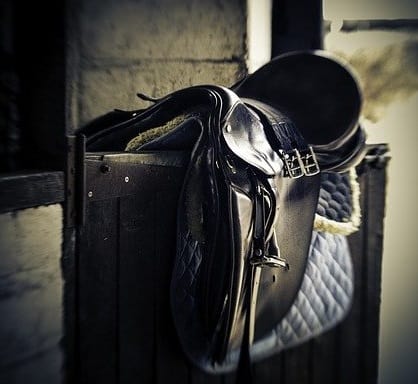
Checking tack for safety should be a daily routine. Not maintaining it and adopting a “sure it’ll be grand” attitude will certainly increase the risk of a malfunction with the possibility of serious consequences that could be avoided.
In a commercial setting health and safety deems tack to be equipment and as such it should have a maintenance record for safety checks. In theory this should be carried out before each use. An experienced person would likely be tuned into checking it as it is being applied to the horse and would give a more thorough check when cleaning it after use. Tack Cleaning is a task that should be carried out daily to maintain the condition of the leather.
When I was eventing seriously I was very aware of my equipment not letting me down. I can remember one Badminton back in 1995 where the great Mark Todd, amazingly, managed to complete 2/3’s of the cross country on Bertie Blunt with a broken left stirrup leather; I was also well aware that I am not Mark Todd! So checking my equipment, and that of my clients who put their trust in me, was an important part of my routine.

My Top Tips For Your Tack.
- The First thing I would advise is to always buy good quality saddlery; the quality of leather varies and the process by which leather is “tanned” is different in different countries. The thickness of the hide and the type of hide used all add to the strength. While there are no tanning factories in Ireland hides tanned in Europe have the best reputation due to the process that is used. Different hides and tanning processes produce different qualities of leather that are suited to their purpose. For example the pale blue green colored leather that is found on rug straps is chromed leather, durable and weather proof. Whereas the oxblood colored leather, often used in stirrup leathers and girth tabs, is called buffalo hide and will stretch until quite thin before it breaks giving lots of warning to the rider that it needs to be replaced.
- The second point is that it doesn’t matter how good the leather is if you don’t look after it. To keep it supple and prevent cracking leather needs to be nourished. Oils and lanolin products have been used for centuries to feed leather and to keep it flexible and hydrated. These days there are dozens of products available to choose from. For storage it needs a cool dry environment and should be hung up on properly constructed racks that are designed to prevent damage.
- My third point is that your tack is made up of pieces of leather held together by stitching. The thread used was traditionally linen and pre-waxed before use; over time water and oil can get between the fibers of this thread and weaken it. Over wetting and soaking in oil can cause the thread to decay. More recently polyester cotton and nylon threads are also used and have more durability to rot but are not indestructible.
- My fourth point is regarding the metal fittings used in the buckles on your tack. While solid stainless steel is the best choice, cheaper imposters are found and these are generally an amalgam such as nickel with a stainless coating. They are not as durable and can be prone to breakage. Brass buckles have become popular they are more resistant to corrosion than steel. As both steel and brass are an amalgam of several different metals the strength and durability of both depend on the % of the ingredients. This is likely why we get some stirrup irons breaking with no warning. As happened to Australian rider Sam Griffiths in 2016 at Burghley riding Happy Times, this resulted in a recall by the manufacturer of that particular stirrup iron.
So What Areas Need to Be Inspected Regularly
The Following Are the 5 Areas that need to regularly Safety Checked on Your Saddle.
1 Stirrup bars; the stirrup bars are attached to the tree of the saddle and hanging on theses are your stirrups. The bars are designed to allow the leather to slide off in the event that you fall but your foot is caught in the stirrup iron. The safety catch should be open when riding to allow this to happen. When riding and leading, an unmounted tacked horse, then the safety catch can be closed to prevent the loss of the stir[1]rups but must be opened before a rider mounts
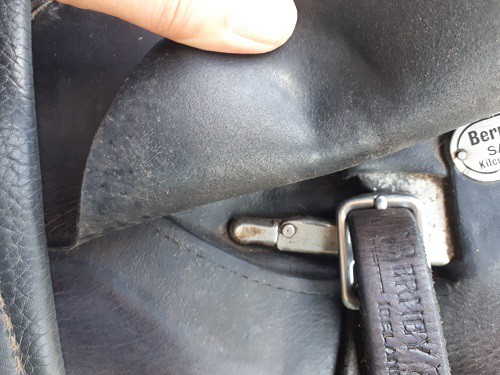
2 Check the stitching on the stirrup leather. This is designed to give you plenty of warning if it’s wearing but once it starts to part company it can easily be pulled apart and should be re-stitched immediately it’s noticed. If you are riding with the same length stirrup all the time then check the holes you use the most; these are likely to wear more so check them for cracks and stretching. One hole can tear into the adjoining hole and weaken the leather. Also check where the stirrup Iron sits as this too is a point of wear.
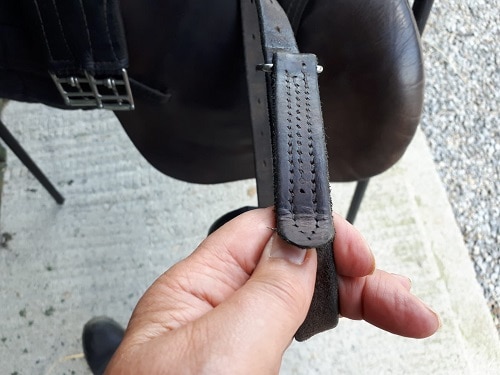
3 Check the girth tabs, these are quite often made of buffalo hide and will stretch and become thin before they break giving plenty of notice. Make sure the holes you use on a regular basis are not worn or cracking. Try to remove you girth completely and allow the leather to relax when not in use. If you have 3 girth tabs then always use the first and third or first and second.
The first strap is sewn independently on to a webbing strip that passes under the seat, where you can’t see it, and attaches to the first strap on the other side. The second and third are attached to the same piece of webbing but independent of the first. If one of the webbing pieces breaks you will still have the girth in place if you use the suggested combination. Remember, a bit like with the stirrups, to check the stitching at the top of the girth tabs for soundness.
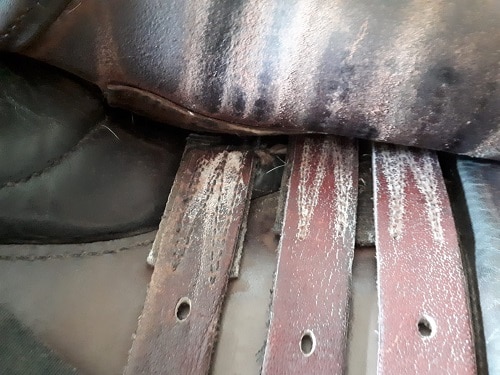
4 If attaching a breast plate or breast girth to your saddle then always use the D Ring that is attached to the tree of the saddle not the ring that is attached to the saddle with a loop of leather. Only the D ring pined into the tree is strong enough to withstand any pressure should your breast plate come into effect. Remember that the breast plate is not de[1]signed to hold the saddle in place but more to prevent it slipping back to a dangerous position in the event that the saddle starts to move.
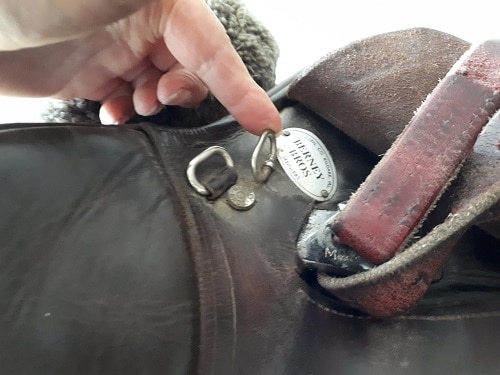
5 Finally and by no means least, check your girth. The choice of material is a personal thing and what suits your horse. I like leather with a bit of elastic. Check that the leather is in good condition and not cracking but also that the elastic is not frayed at the buckle. My personal choice is to go for a girth where the elastic is over laid with a piece of leather at the buckle itself. This gives extra strength at a point of stress. Also always have more than one layer of elastic.
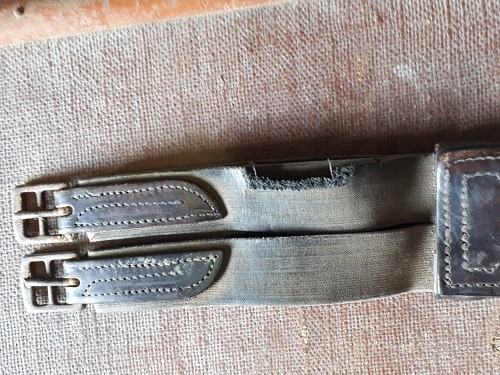
This Article was written by Jessica Soley BHSI and was originally published in the August 2020 Issue of Irish Sport Horse Magazine. All Pictures of Tack Courtesy of J.Soley BHSI and are subject to Copyright.
